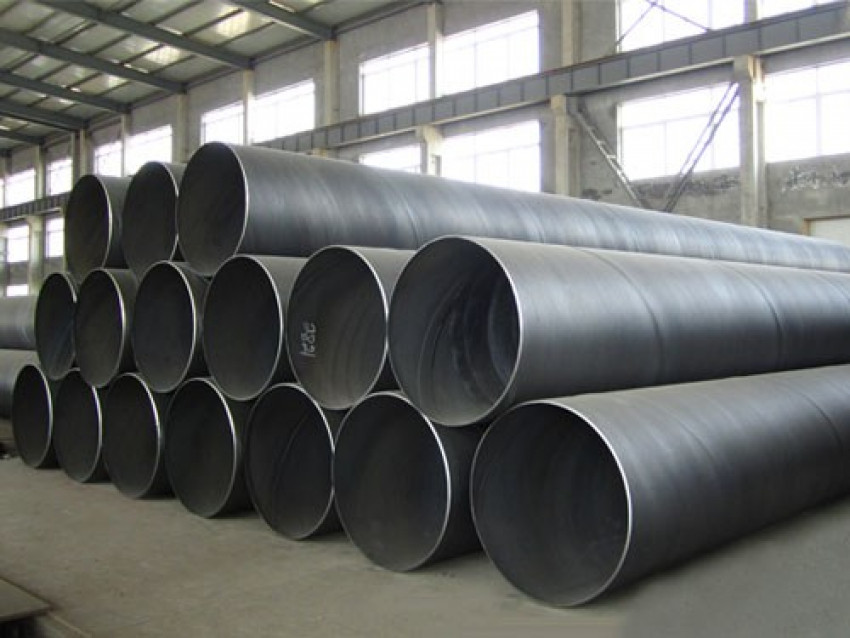
SSAW steel pipe (spiral submerged arc welded steel pipe) is formed by spiral bending of hot-rolled strip steel, and spiral seam steel pipe (also called spiral welded pipe, spiral pipe spiral steel pipe) is formed by automatic welding of submerged arc for inner and outer joints.SSAW steel pipes are mainly used for fluid services, low pressure fluid services, pipelines, low pressure fluid services, pressure applications, pipe piles, non-alloy and fine grain steel cold formed welded structural hollow sections, oil and gas industry pipeline transportation systems (grade A steel pipes) , used as casing or tubing for oil and gas industrial wells.
The production of submerged arc spiral welded pipes is based on the use of tandem welding technology to join the inner and outer coil edges, trimmed and bevelled by carbide milling to obtain a high quality weld structure.
The following is the main process of its welding:
1. Oiling and marking: oiling the qualified spiral steel pipe to prevent corrosion, and marking according to customer requirements.
2. Leveling and milling: use an anvil machine to level the originally curled steel plate, and then perform double-sided milling on both edges of the steel plate by an edge milling machine to achieve the required plate width, plate edge parallelism and groove shape.
3. Shearing and forming: spirally coil the steel plate into a tubular shape along the outer edge.
4. Butt welding cutting: using double-sided submerged arc welding technology for pre-welding, internal welding and external welding. The welded and formed steel pipe is cut to specification length using a plasma ruler.
5. Visual inspection: some basic parameters are checked by professional technicians.
6. Ultrasonic flaw detection: 100% inspection of the internal and external welds and the base metal on both sides of the weld.
7. X-ray flaw detection: 100% X-ray industrial TV inspection is performed on the internal and external welds, and an image processing system is used to ensure the sensitivity of flaw detection.
8. Pressure test: The spiral steel pipe is tested one by one on the hydraulic testing machine to ensure that the steel pipe meets the test pressure required by the standard.
9. Chamfered flat head: Process the pipe end of the spiral steel pipe that has passed the inspection to achieve the required pipe end groove size.
10. Post-inspection: ultrasonic and X-ray flaw detection and magnetic particle inspection of the pipe end are carried out again for the spiral steel pipe to check whether there are welding problems and pipe end defects




